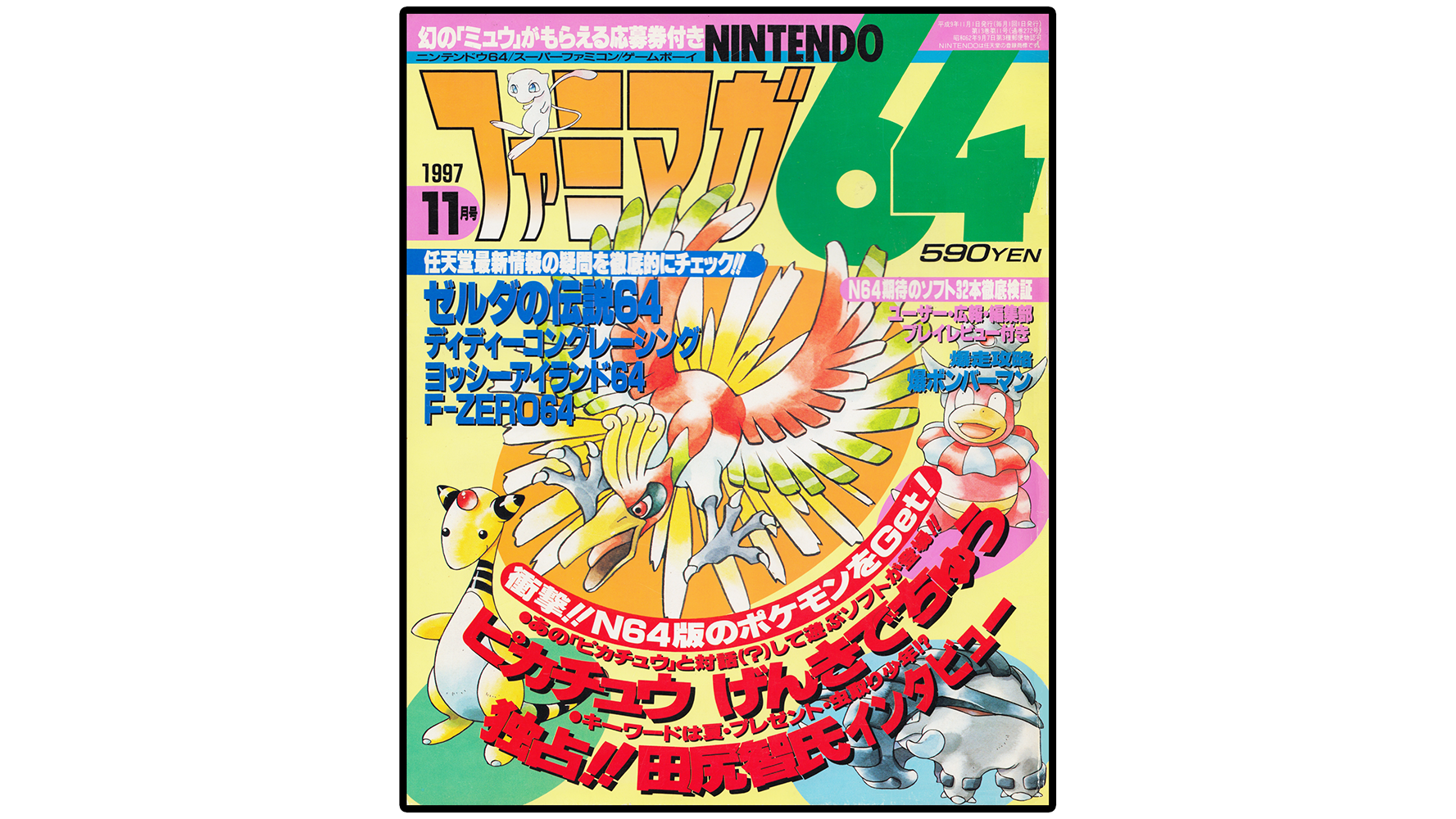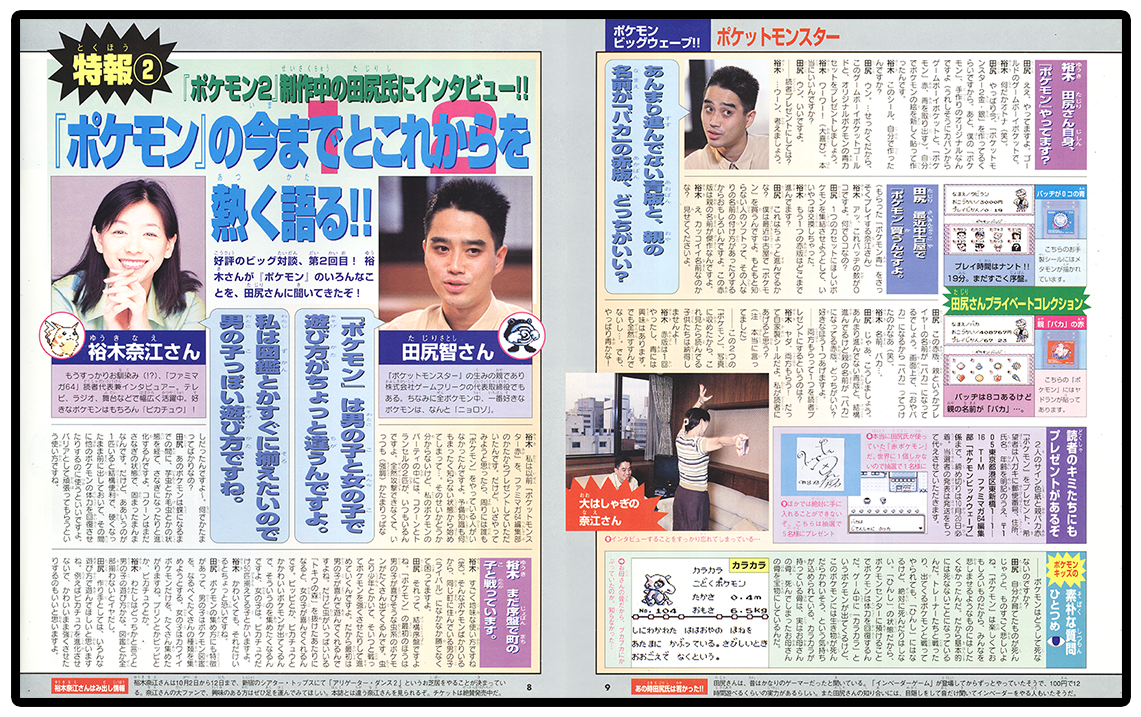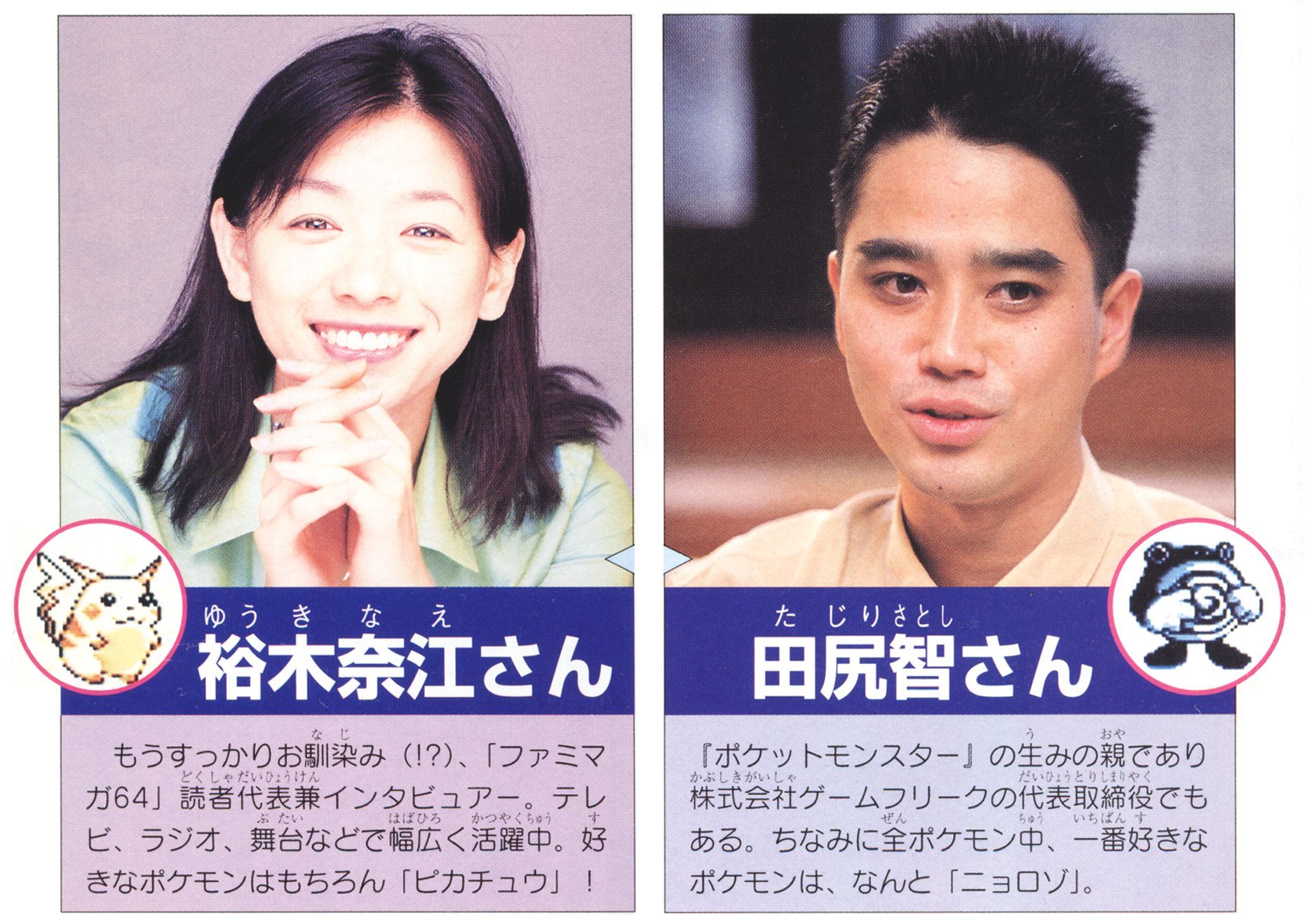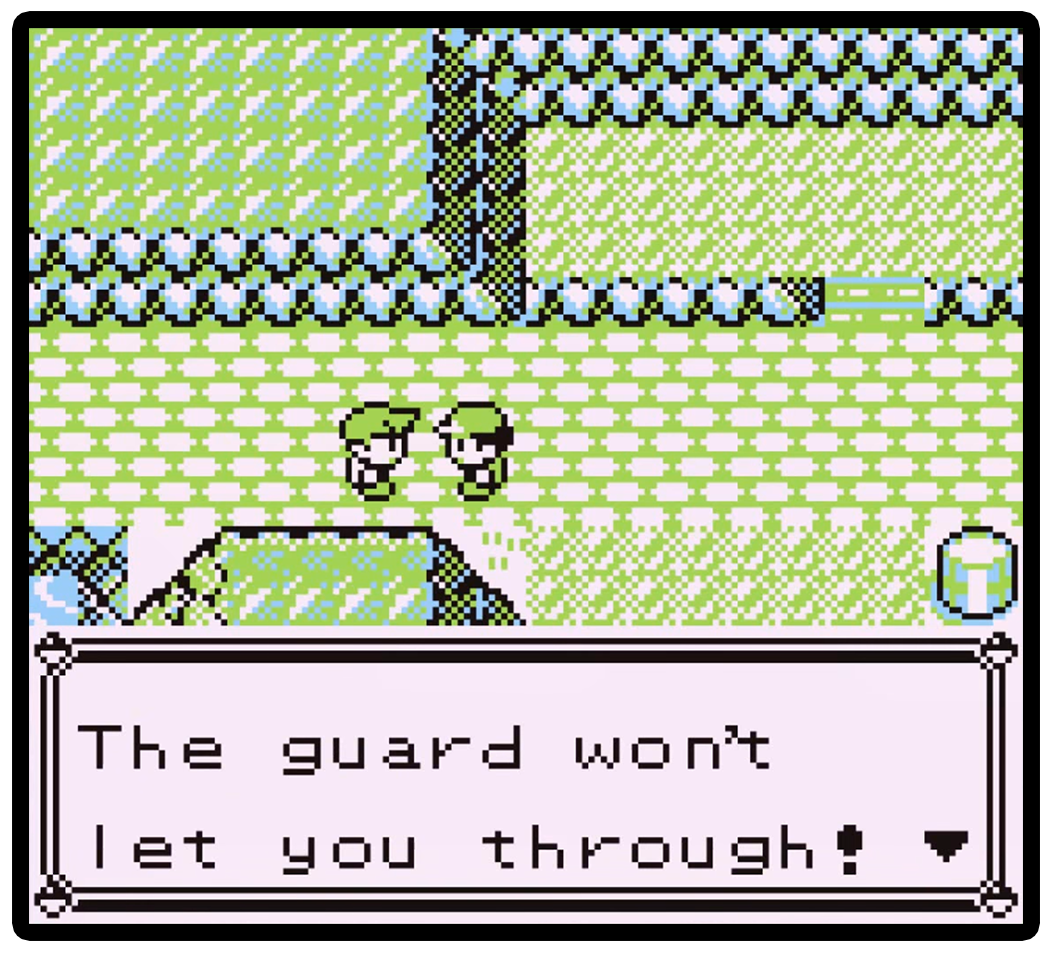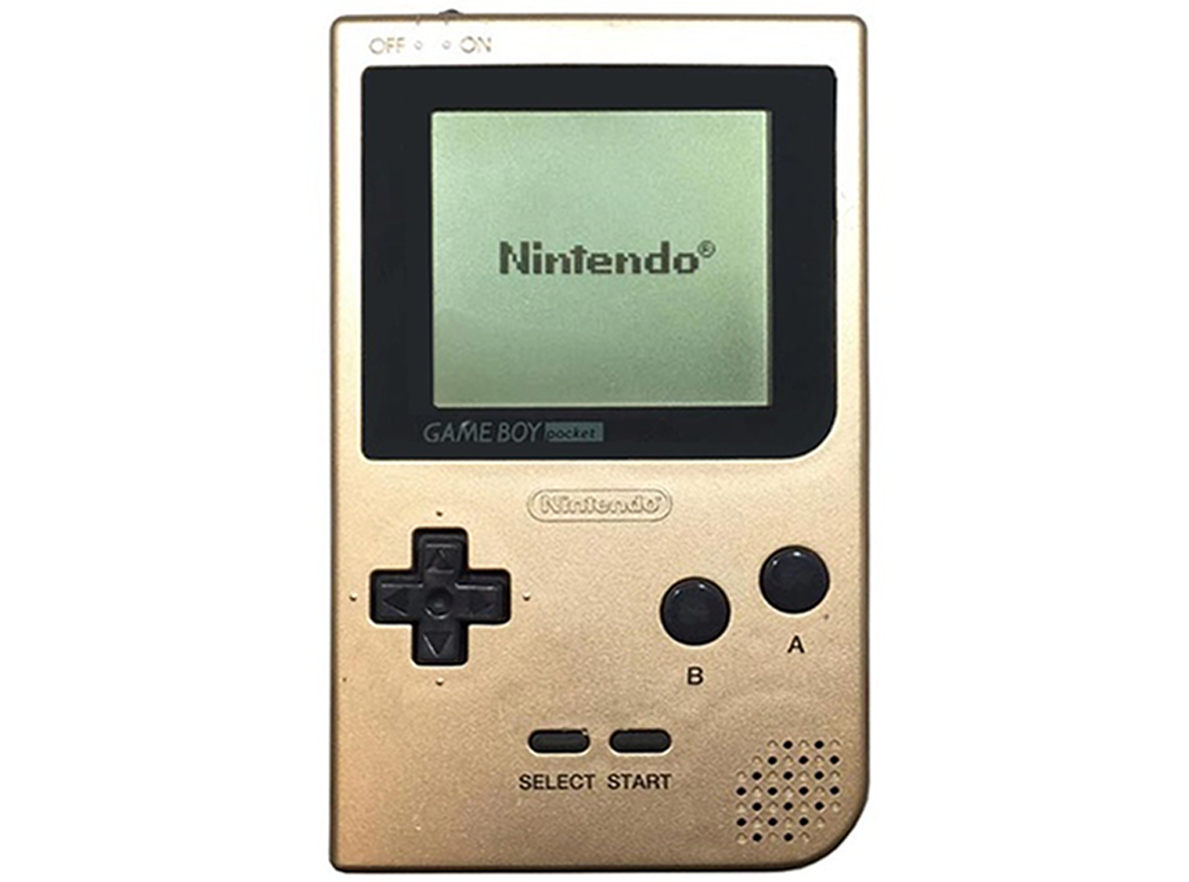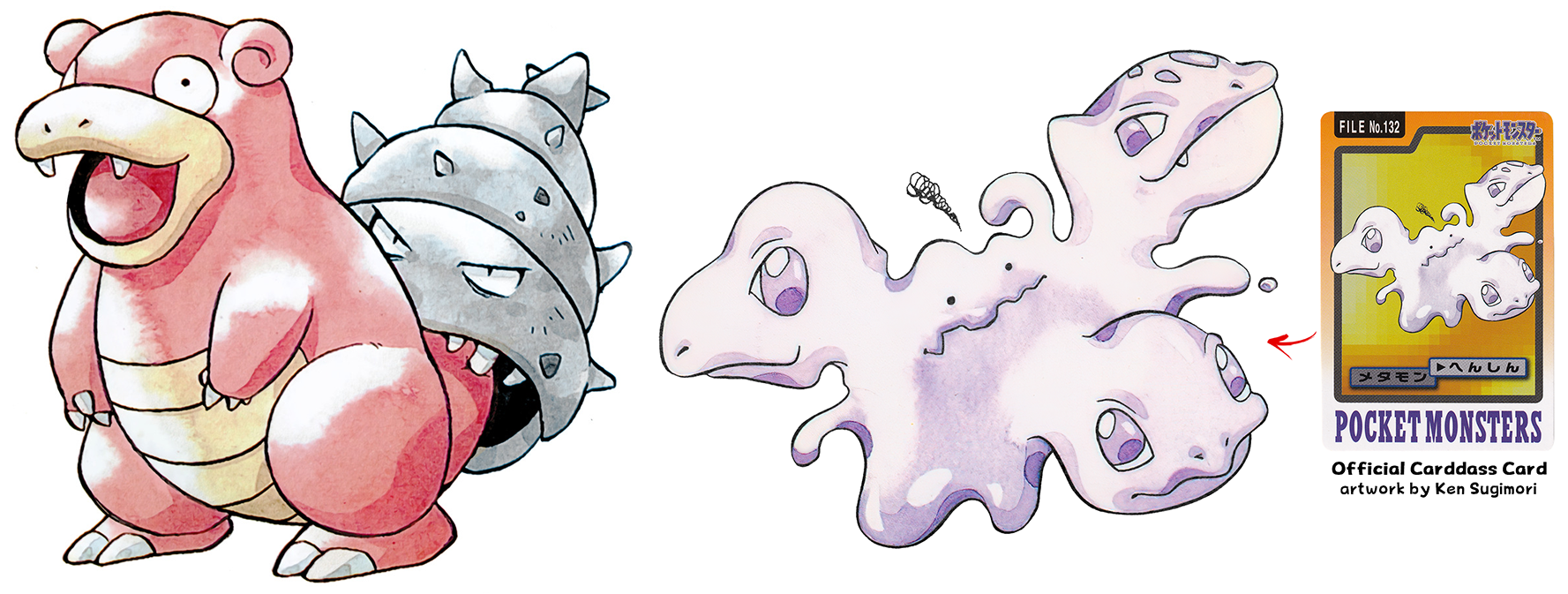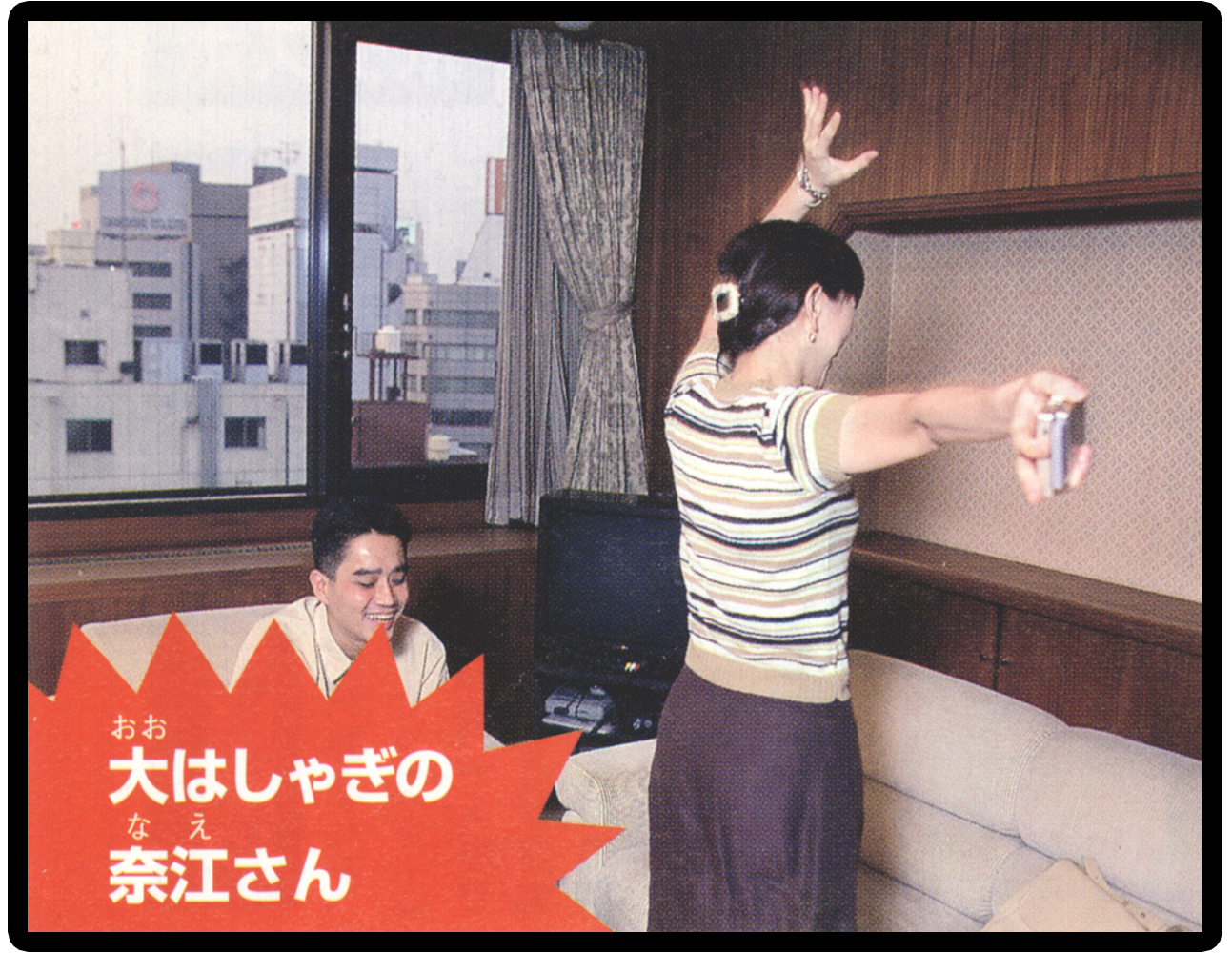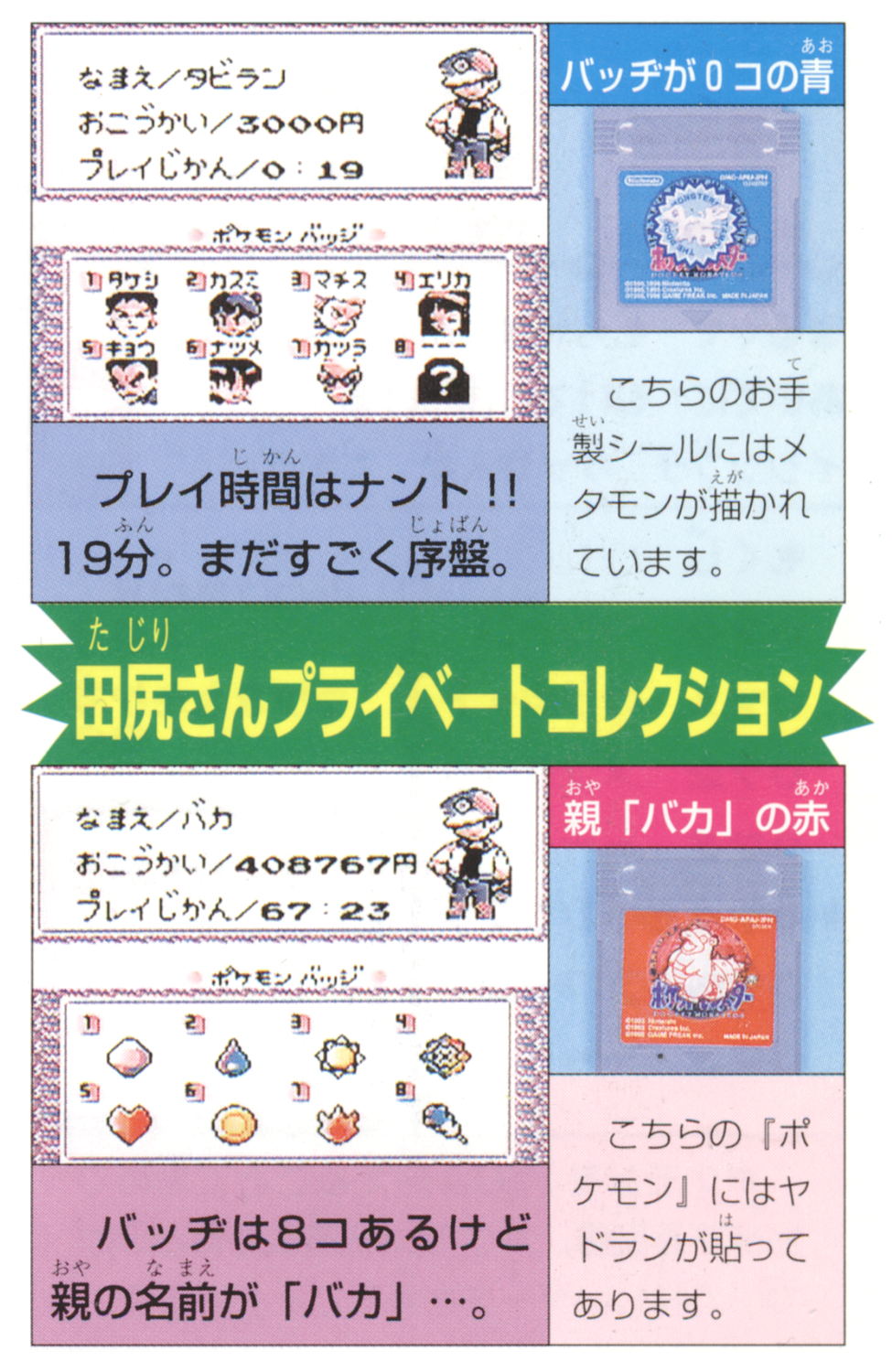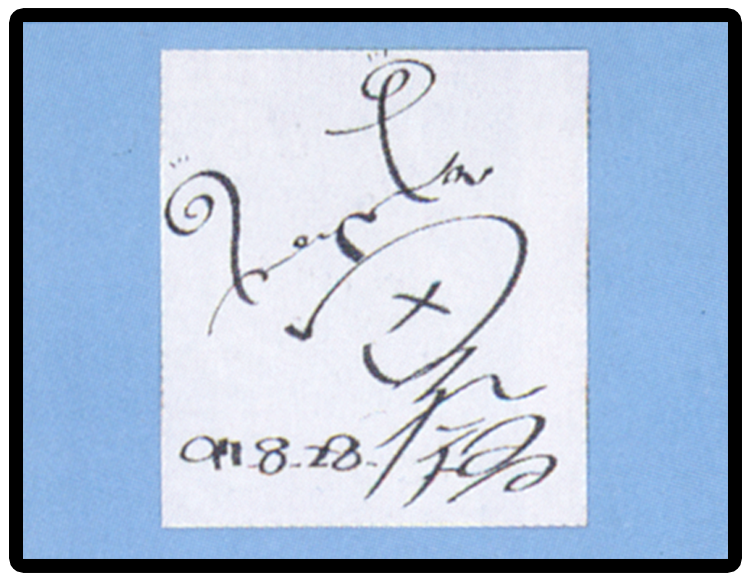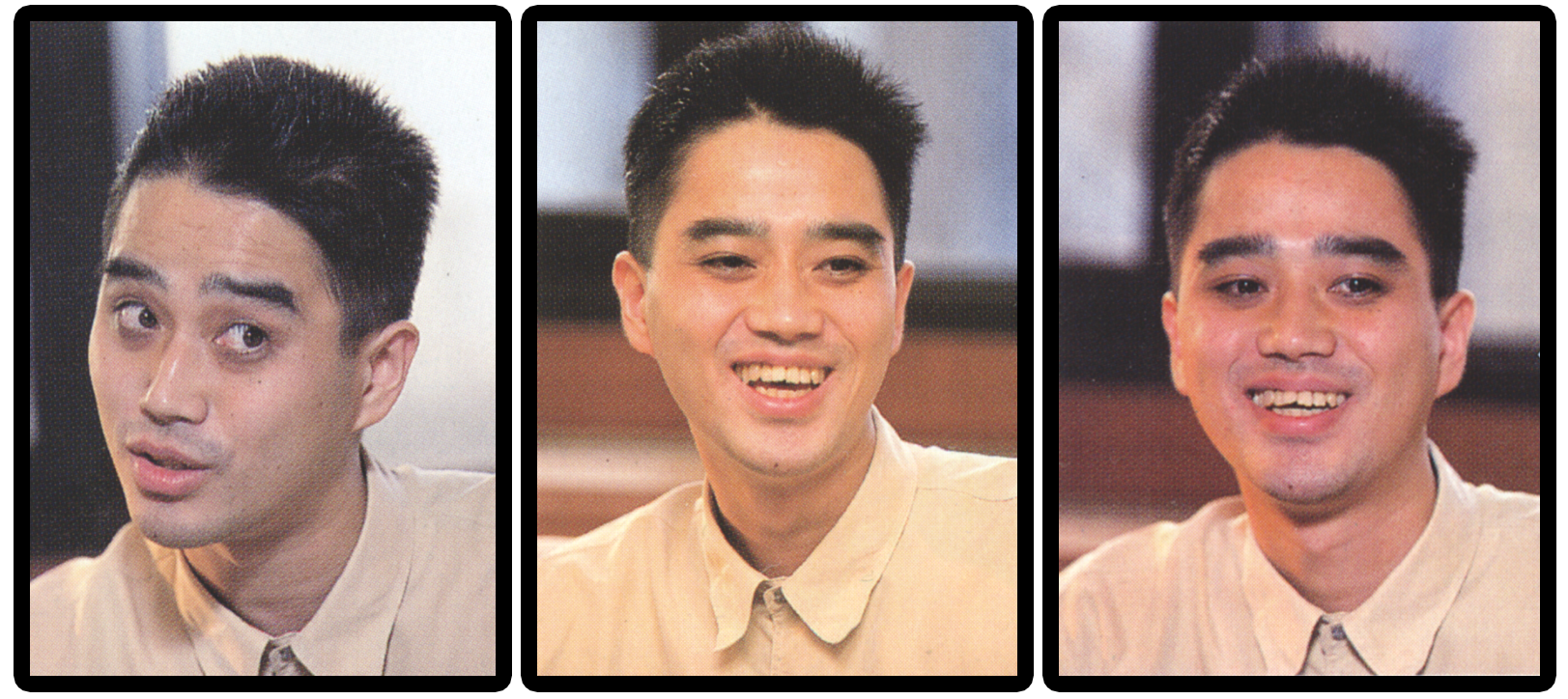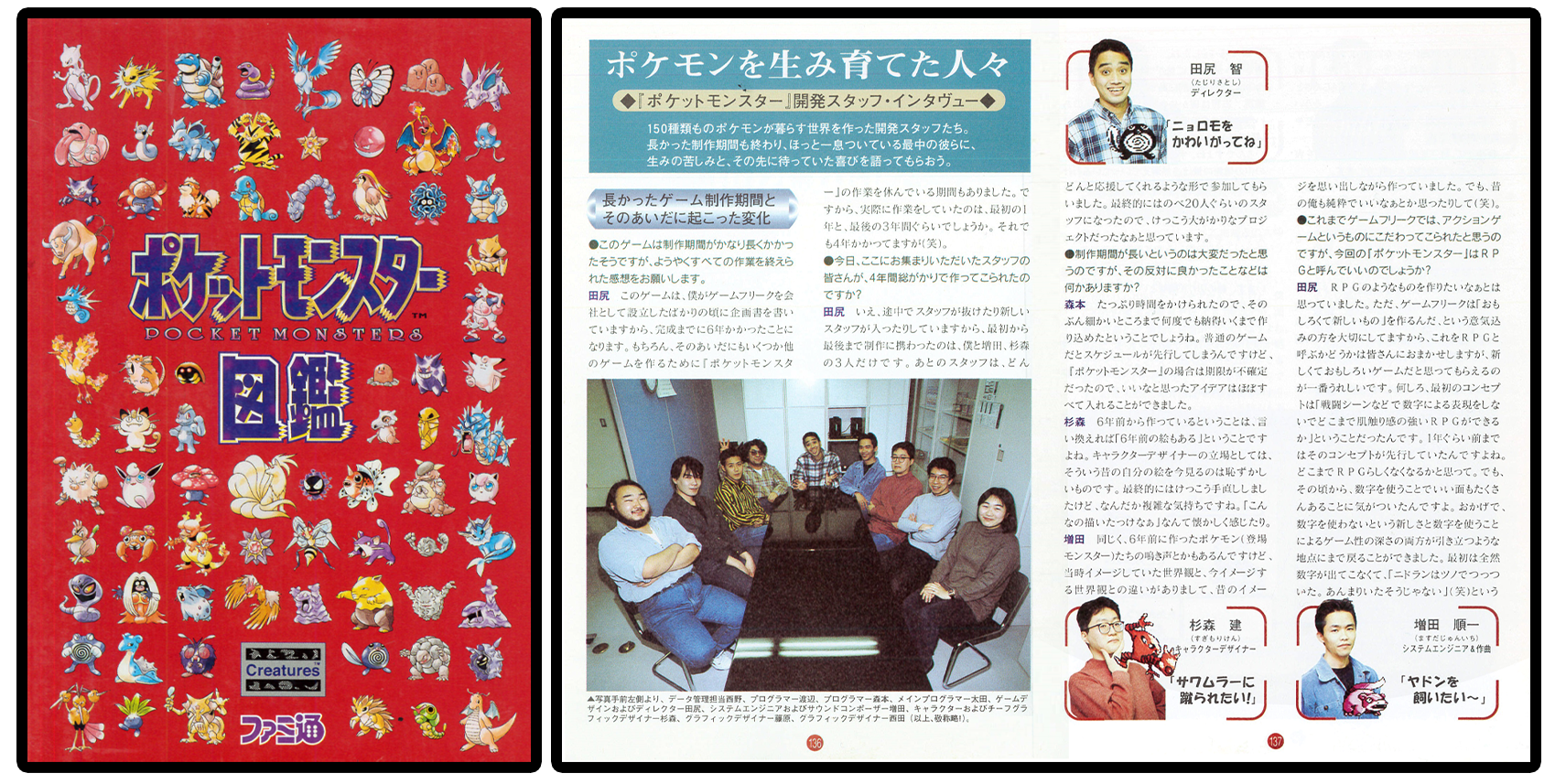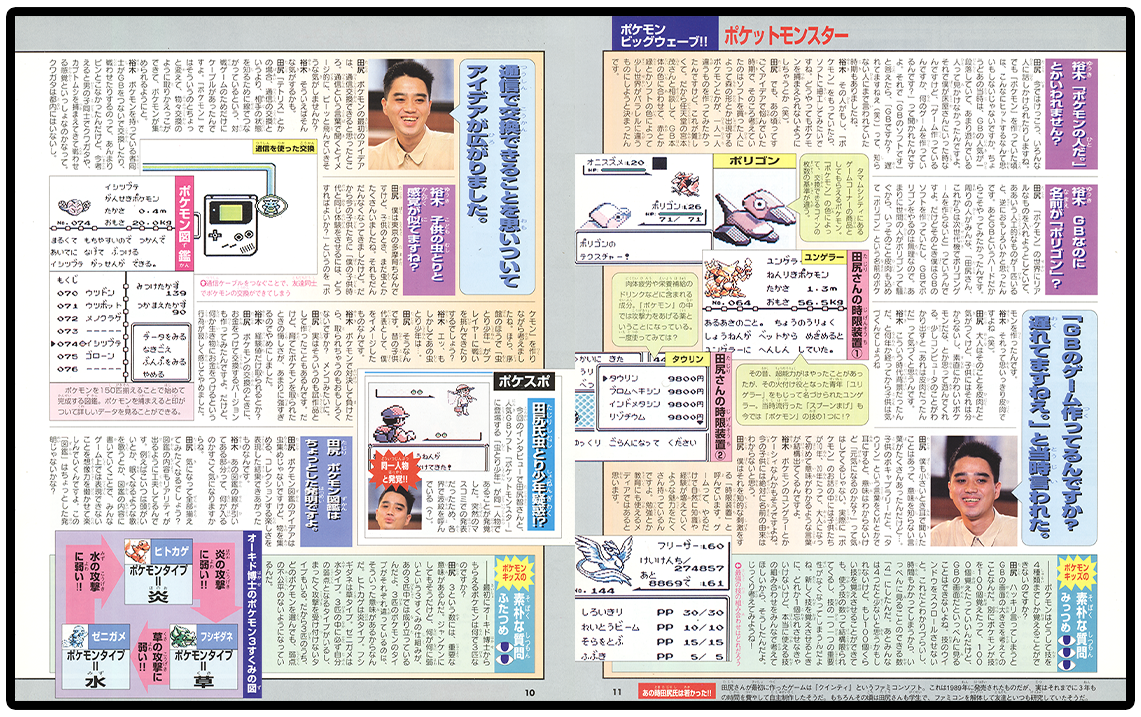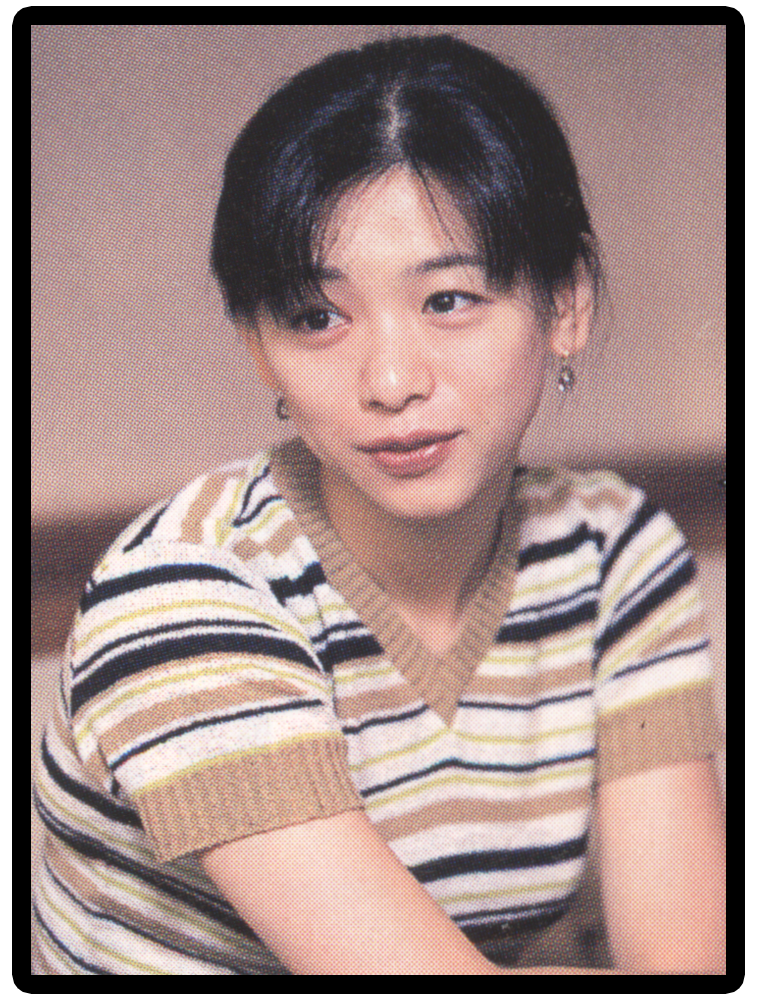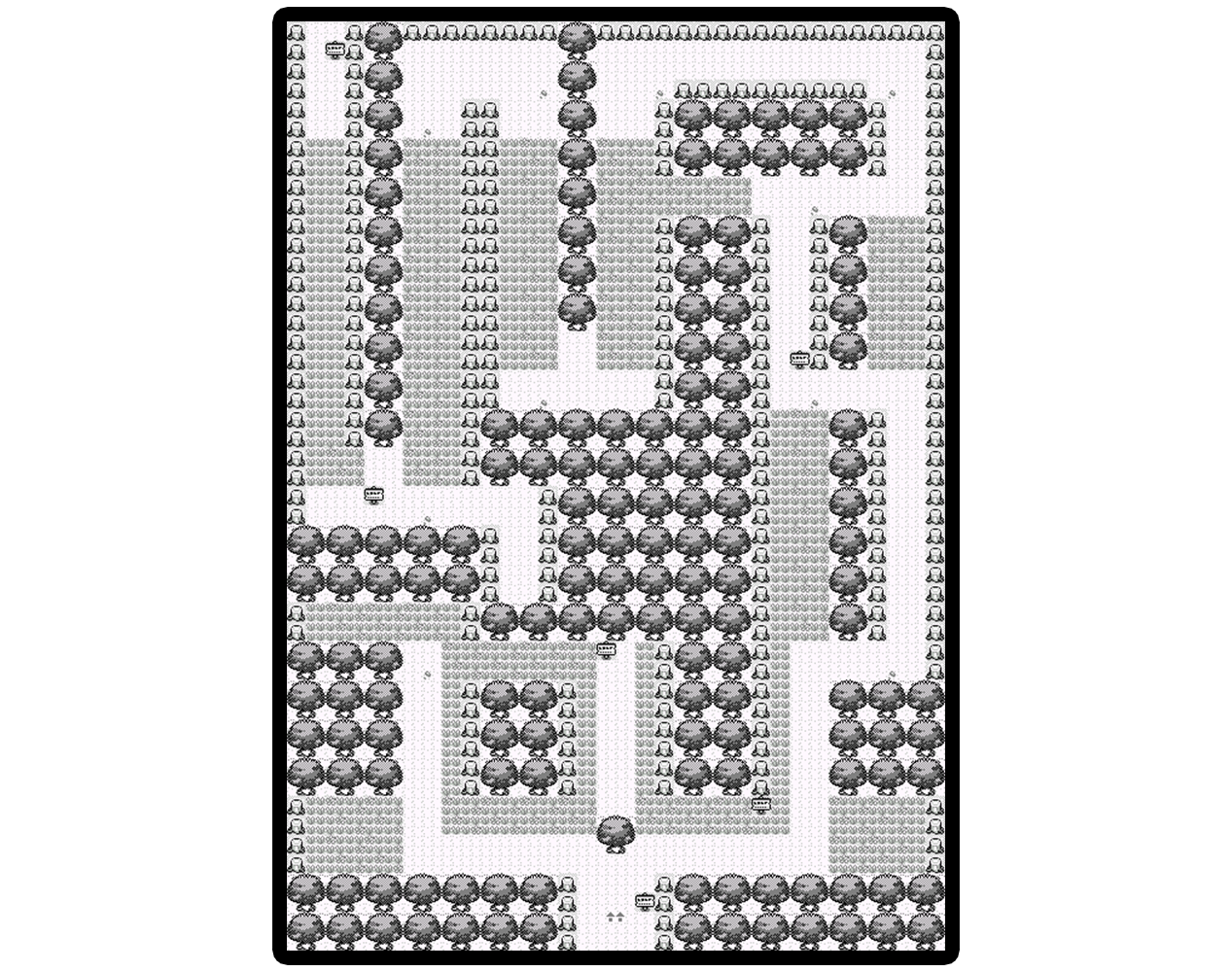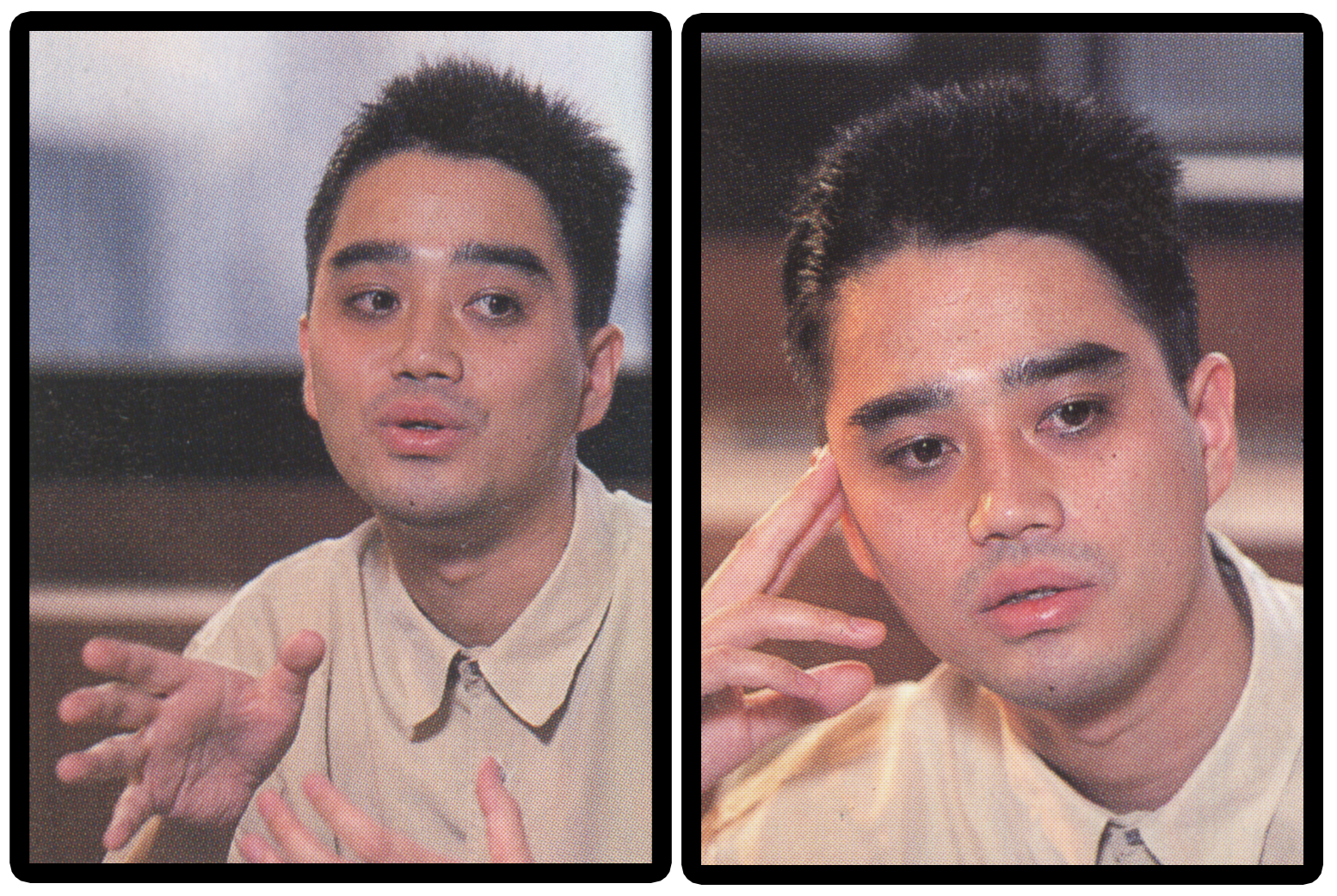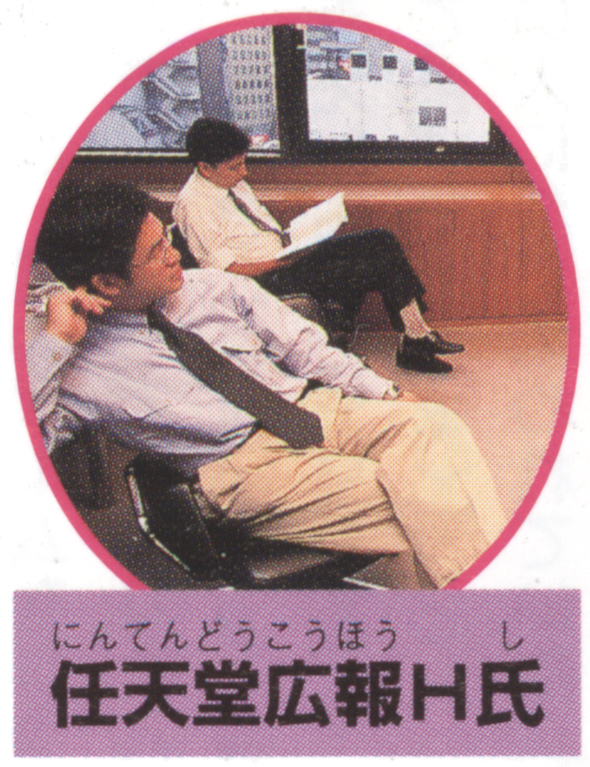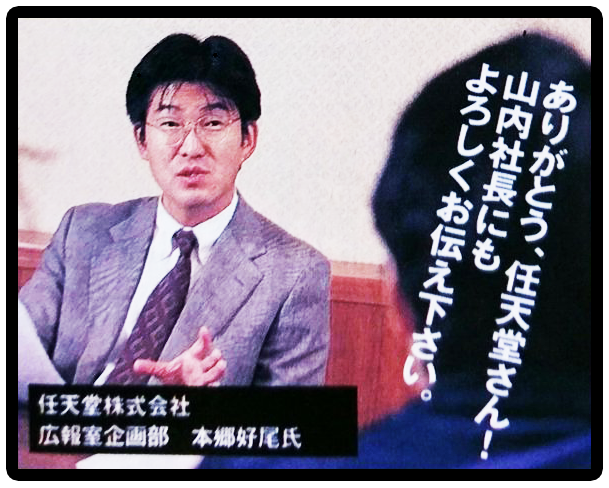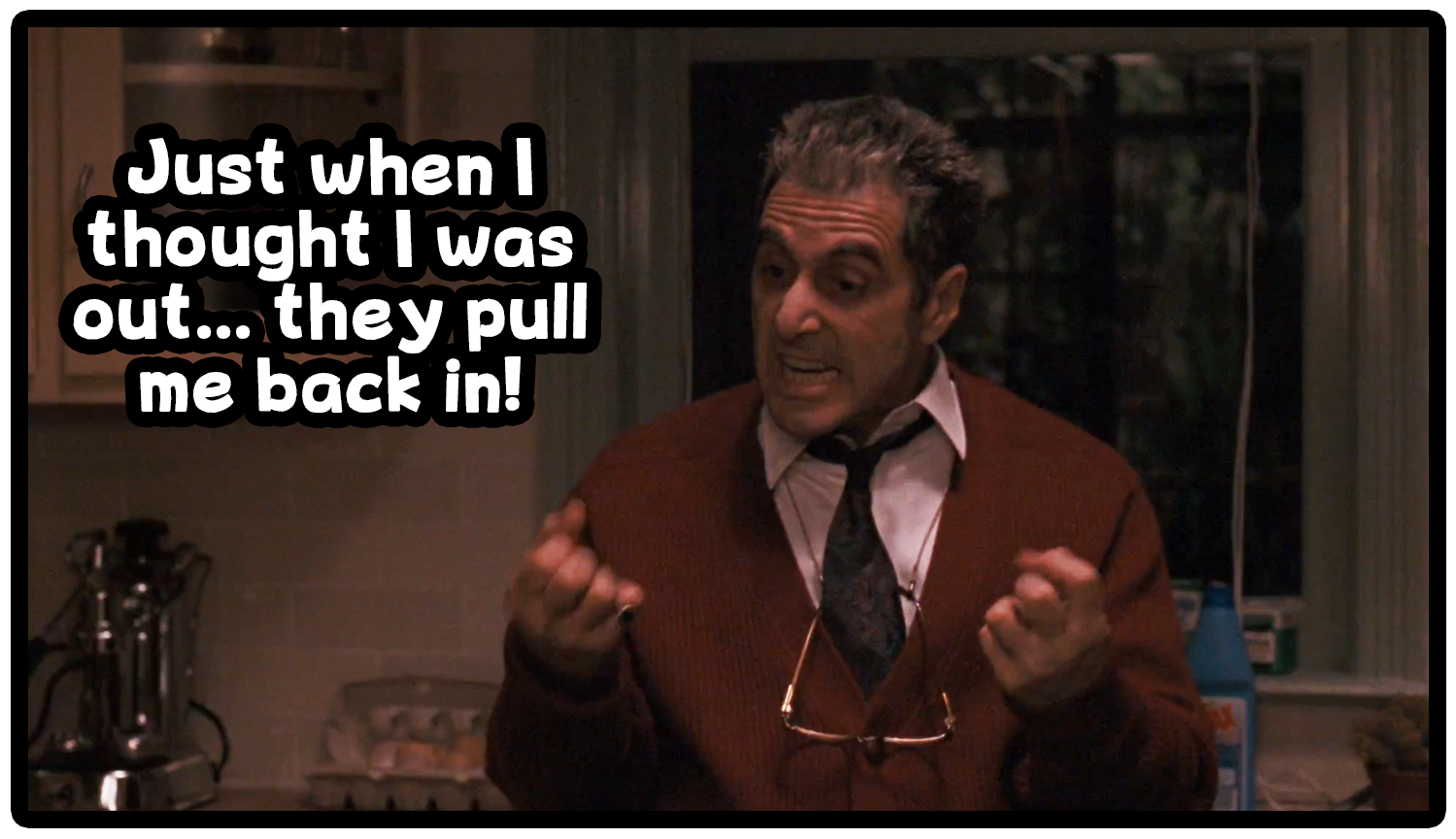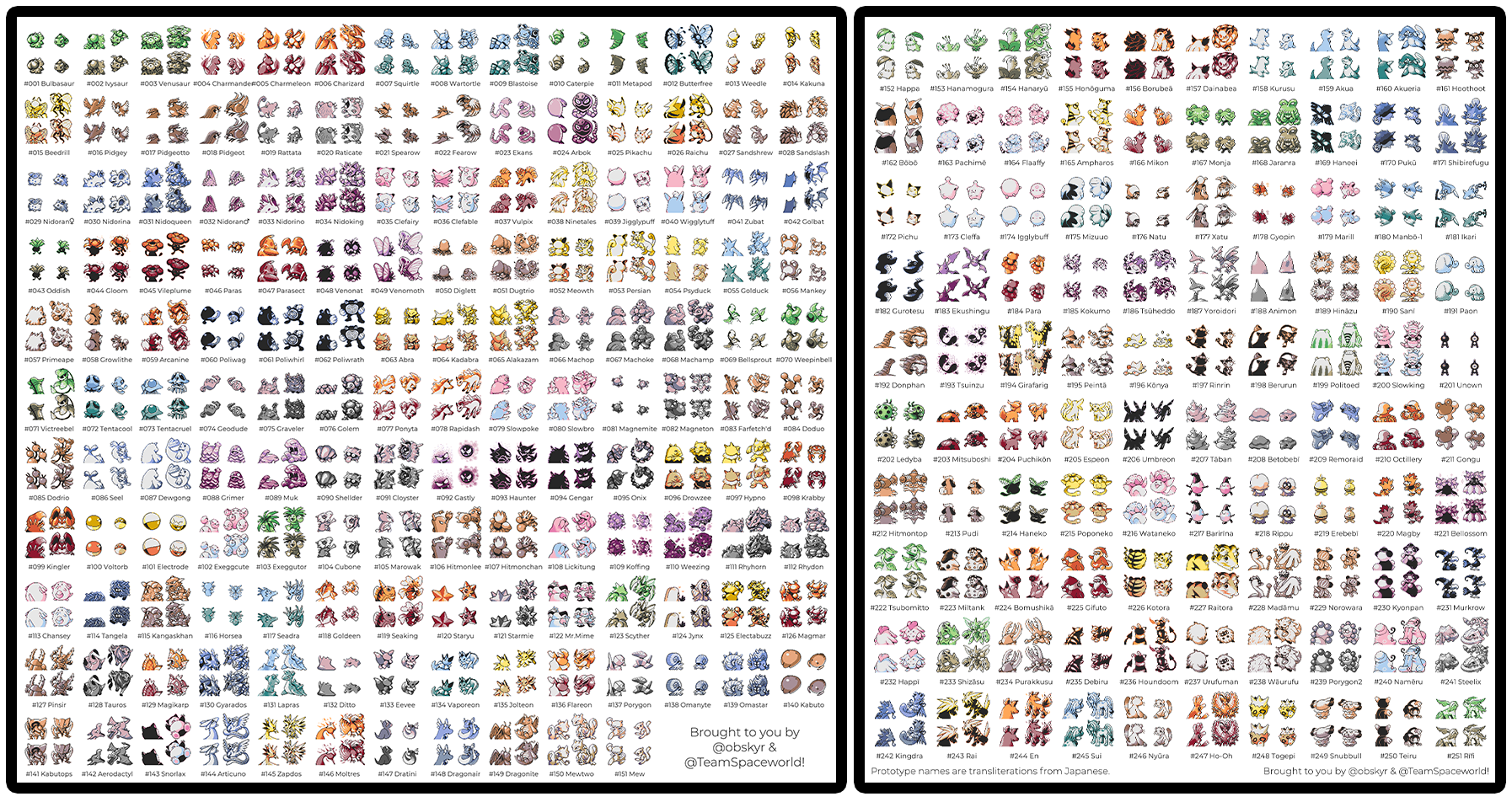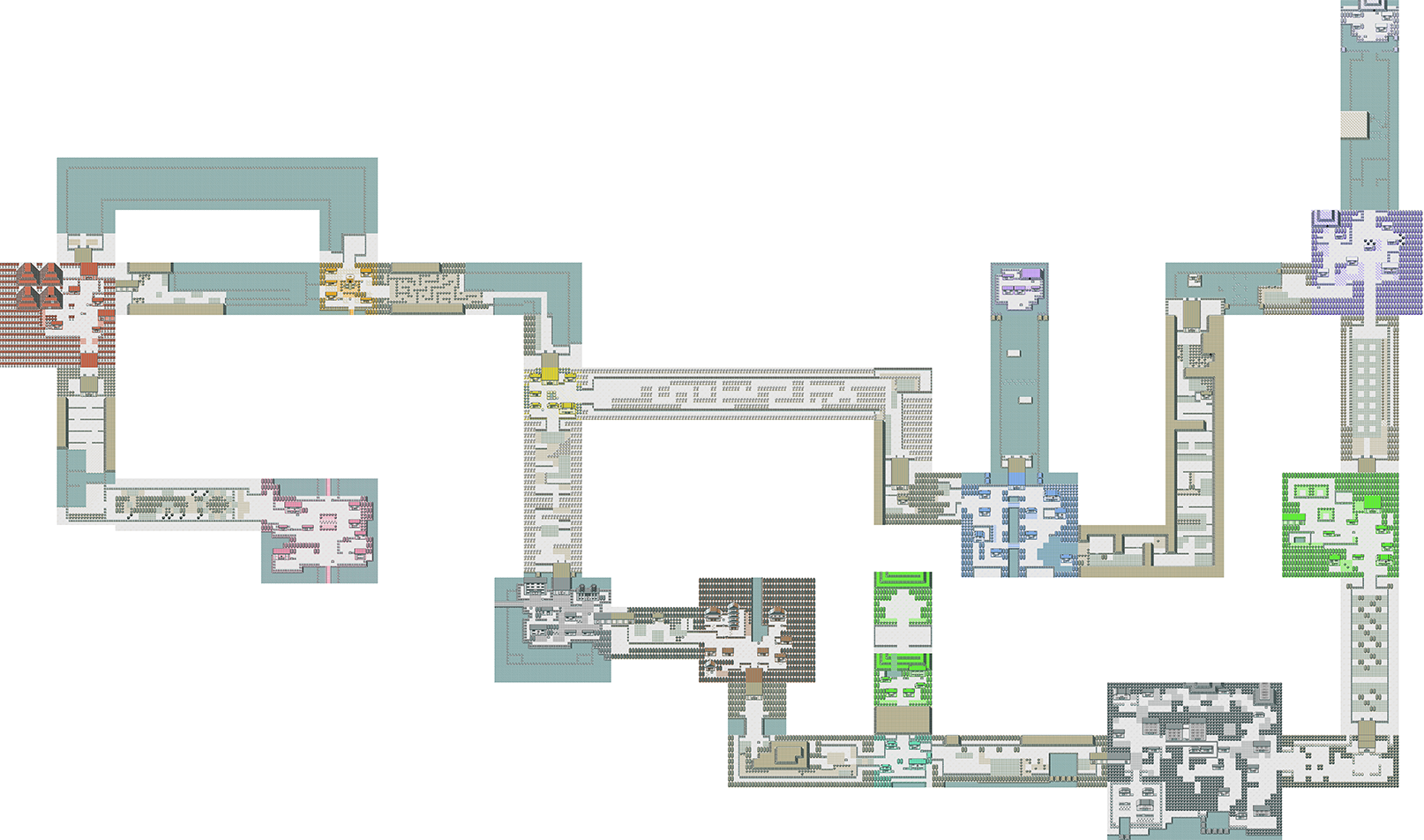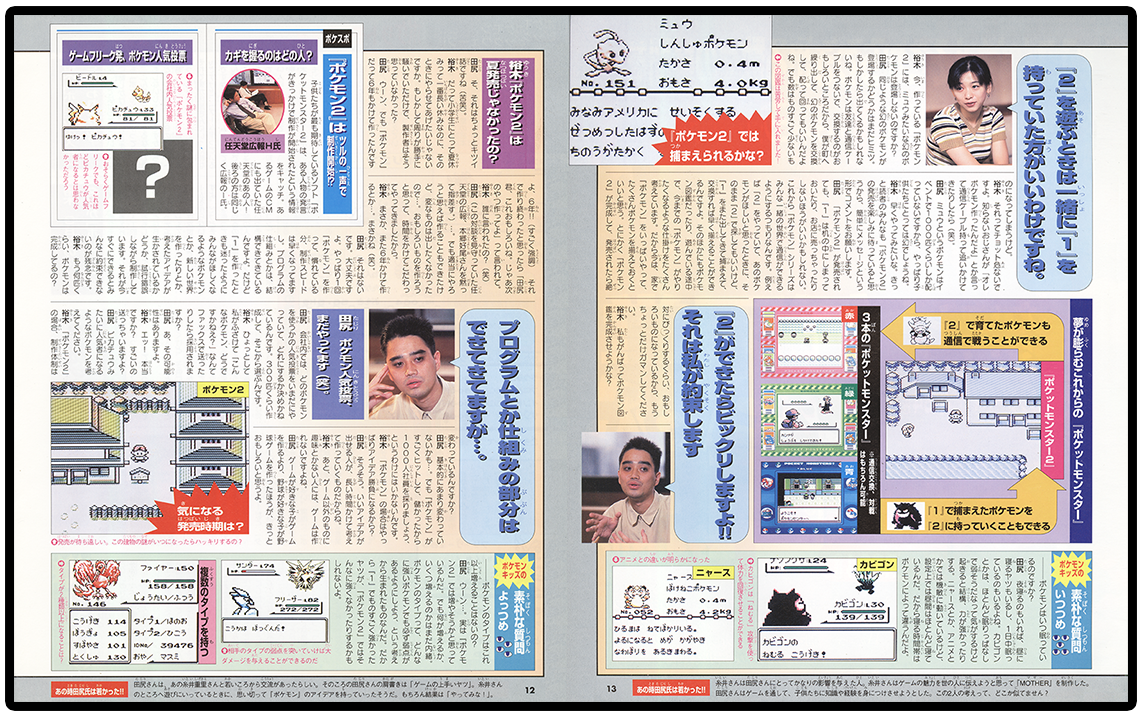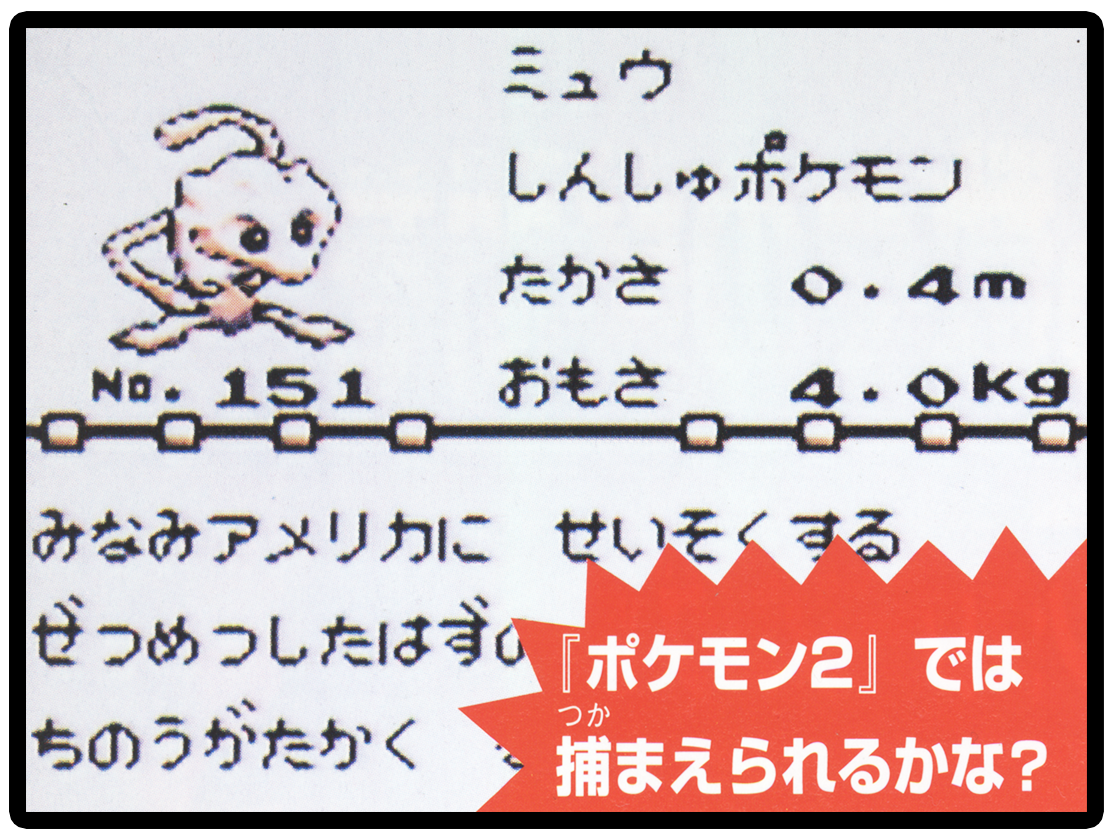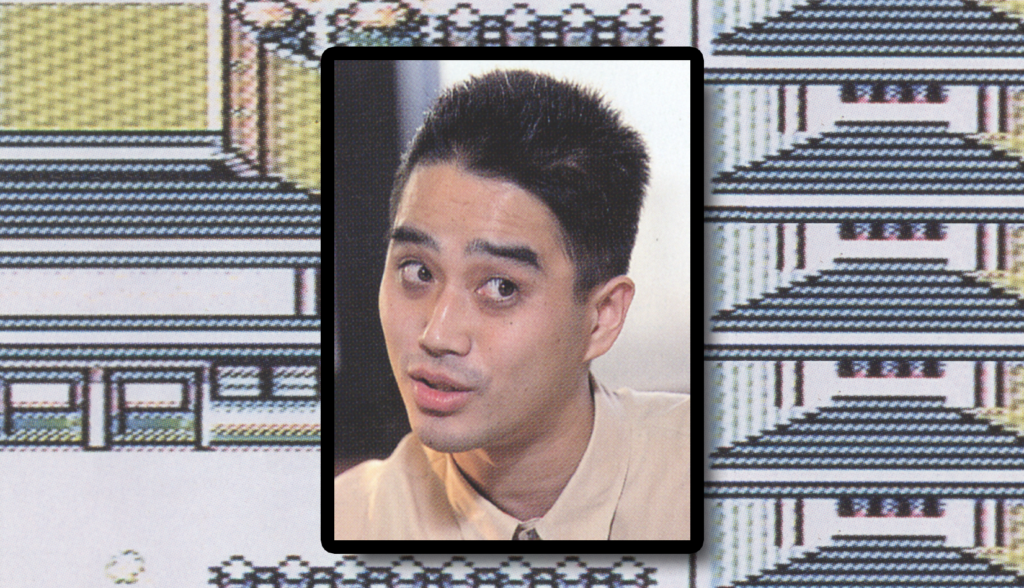
Translation: Satoshi Tajiri Cuts Loose (1997 Interview)
Satoshi Tajiri discusses development, dumbasses, and why Porygon exists
Written by Dr Lava • September 17, 2021
The following interview was originally printed in the November 1997 issue of Famimaga 64, a monthly Japanese magazine. Like most interviews published on this website, it was never made available in English, so I commissioned Japan-based interpreter Jacob Newcomb to translate it. In this interview, Pokemon series creator Satoshi Tajiri talks about the development of Gen 1, and various little bits of trivia. He also talks a bit about Gen 2, which at the time, was still fairly early in development. Tajiri’s usually all-business, but in this six page interview we actually get to see him cut loose and have some fun.
Highlights include explanations for why Porygon and Cubone exist, a glimpse of Tajiri’s homemade cartridges, and scrapped ideas from Gen 1’s development, like randomly-generated landscapes and having to give away your Pokemon to trainers who defeat you in battle. A big thanks to my friend (and frequent collaborator) HiResPokemon for scanning this magazine for us, and an equally-big thanks to my Patreon supporters who fund these translations. Okay so without further introduction, here’s the translation.
Interview with Tajiri, mid-development on Pokemon 2
Discussing what Pokemon’s done so far and what comes next!!
Nae Yuuki: Already a well-acquainted childhood friend (!?), she’s the interviewer representing the readers of Famimaga 64. She’s experience wide success on TV, radio, and on stage. Her favorite Pokemon is Pikachu, of course!
Satoshi Tajiri: The father of Pokemon and CEO of Game Freak. By the way, his favorite is Poliwhirl.
Yuuki: “Someone from the editorial department gave me a copy of Pokemon Red, but when I eventually got around to playing it, I didn’t know anyone else who was playing Pokemon. So I went in with no prior knowledge of the game, and maybe that’s why I was constantly using Kakuna and Metapod. They couldn’t attack at all, and just kept using Harden. Why is getting harder the only thing they can do?”
Tajiri: “Those Pokemon start out as caterpillars, and have to turn into cocoons before they evolve into butterflies. Kakuna’s still a cocoon, and already pretty solid. It can be very useful to have up front while you heal another Pokemon. Their purpose is to serve as a barrier.”
Yuuki: “That seems like a rather simple way of using them. They’re the only Pokemon I have, so I’m struggling to beat the boy from the same town (the rival).”
Tajiri: “That’s pretty early in the game. The game starts out with a lot of different Bug Pokemon that boys will like. There’s also a lot of Bug Catchers for you to battle, which will help your Pokemon grow stronger and evolve. But once you exit the bug-filled Viridian Forest, you’ll reach an area girls will like. Cute Pokemon like Clefairy and Pikachu appear, the kind of Pokemon girls like to collect. Some girls just collect 50 different Pikachu.”
Yuuki: “I’ll admit Pikachu’s cute, but I can’t imagine having that many.”
Tajiri: “There are distinctions in how different people play — boys try to catch as many varities as possible to fill the Pokedex, while girls mostly focus on catching lots of cute Pokemon. Like Jigglypuff, Clefairy, or Pikachu.”
Yuuki: “I guess I play more like a boy then. I feel I have to complete the Pokedex 100%.”
Tajiri: “As a creator, I want people to enjoy playing my game in lots of different ways. For example, some people keep their Pikachu cute, and train it to get stronger without evolving it.”
Yuuki: “Does Tajiri himself play Pokemon?”
Tajiri: “Yes I do. On a golden Game Boy Pocket.”
Yuuki: “What kind of adult are you?!”
Tajiri: “Maybe it’s because I’m working on Gold & Silver right now. Also, check out these homemade Pokemon cartridges. (He excitedly pulls out a golden Game Boy Pocket and copies of Pokemon Red and Blue). I pasted on these custom Pokemon stickers myself.”
Dr Lava notes: The artwork on Tajiri’s custom Red cart appears to be a tracing of Ken Sugimori’s Slowbro from the Red & Green art set. The custom Blue is definitely Sugimori’s Ditto from the Bandai Carddass set. These are high-resolution page scans, but unfortunately these photographs were printed as tiny low-resolution images in the magazine. So this is the best look we’re gonna get at Tajiri’s custom cartridges.
Yuuki: “You made these stickers yourself?”
Tajiri: “Yup… If you want, you can have the Game Boy Pocket and Pokemon Blue as a present.”
Yuuki: “Wow! (Extremely happy). Are you serious?”
Tajiri: “Yeah, go ahead.”
Famimaga 64: “How about giving them away to our readers?”
Yuuki: “………Eh, I’ll think about it. (She starts playing her new Pokemon Blue). Oh, you don’t have any gym badges on this one. Why not?”
Tajiri: “I traded all the Pokemon I wanted onto one cartridge, so all the good ones were traded off that one.”
Yuuki: “So how far did you get on the red one?”
Tajiri: “I think I’ve got a decent amount of progress on it? Recently I’ve been buying used copies of Pokemon at second-hand stores. It’s interesting to see the nicknames people give their Pokemon. The player’s name on this red one is a real gem.”
Yuuki: “Huh, is it a cool name? Show me.”
Tajiri: “On this red one, the player named himself Dumbass. Maybe so the game will say ‘player is a dumbass’ in the menu.”
Yuuki: “Their name is Dumbass……” [translator note: this word could be interpreted several ways, including something like “idiot”]
Dr Lava notes: In Japanese, the game doesn’t use the word “player” like in English versions. It actually uses the word “parent.” The same Japanese word is also used for pet owners. So to clarify what the joke is here, Tajiri’s saying the kid who owned this copy of Red might have named himself Dumbass so the game would say “parent = dumbass.” The kid’s talking smack about his mom and dad.
Tajiri: “How’s this sound — the blue one I haven’t made any progress in, or the red one where I’ve gotten pretty far but the player’s name is Dumbass. Which one do you want? Pick one, I’ll give it to you as a gift.”
Famimaga 64: “How about taking both and giving one to a reader?”
Yuuki: “No way, I want both! I mean… they have homemade stickers on them! Do you really think I’d give them to a reader?”
Famimaga 64: “I can’t believe she actually just said that. I’ve already photographed them, so the readers will get mad if you keep them both for yourself!”
Yuuki: “Well I’ve played Red before, so maybe I’ll choose Blue. But there’s no progress in it all… okay yeah, I guess I’ll take Blue!”
Tajiri’s Private Collection
“Blue with no badges. This Ditto sticker is homemade. Only 19 minutes of play time!! Truly only just getting started.”
“Red with the Dumbass player. This one has a Slowbro sticker pasted on. It has 8 badges but the player’s name is Dumbass…”
“He also has some gifts for all your readers out there. You can win either Tajiri’s autograph or the Dumbass copy of Pokemon Red. Applicants should write their postal code, address, name, and age on the form, followed by 105 Tokyo, Minato Ward Higashi Shinbashi 1-1-16 TIM Famimaga 64 Editorial Department “Pokemon Big Wave.” The deadline is October 20th. Winners will be alerted via mail.”
“This is the Pokemon Red that Tajiri himself played. There’s only one in the world, so one lucky reader will be selected. There’s also Tajiri’s autograph you can’t get your hands on anywhere else. Five winners will be selected.”
Tajiri: “The first idea I had for Pokemon was trading with the Game Boy Link Cable. When you hear the word ‘link,’ doesn’t it paint a mental image of things flying back and forth?”
Yuuki: “When you put it that way, I suppose so.”
Tajiri: “But with games like Tetris, it wasn’t used for anything like trading — it was only used to see your opponent’s screen, and originally it was only these sorts of competitive games that made use of the Link Cable. We wanted to do something a bit different with Pokemon, so we made it where you could collect monsters by trading back and forth.”
Yuuki: “Connecting with someone else’s Game Boy to trade and battle is an idea most people couldn’t come up with. Now that I think about it, it’s sort of like how boys catch stag beetles and rhinoceros beetles to make them fight. You don’t really see stag beetles in the city. Did you want Pokemon to feel like you’re a kid catching bugs?”
Tajiri: “I grew up along the Tama River in Tokyo. There were still a lot of bugs around when I was a kid, but they gradually disappeared. So I wondered, ‘how can I give kids these days the same experience I had in my own childhood?’ That’s why Bug Catchers challenge you to battles at the start of the game.”
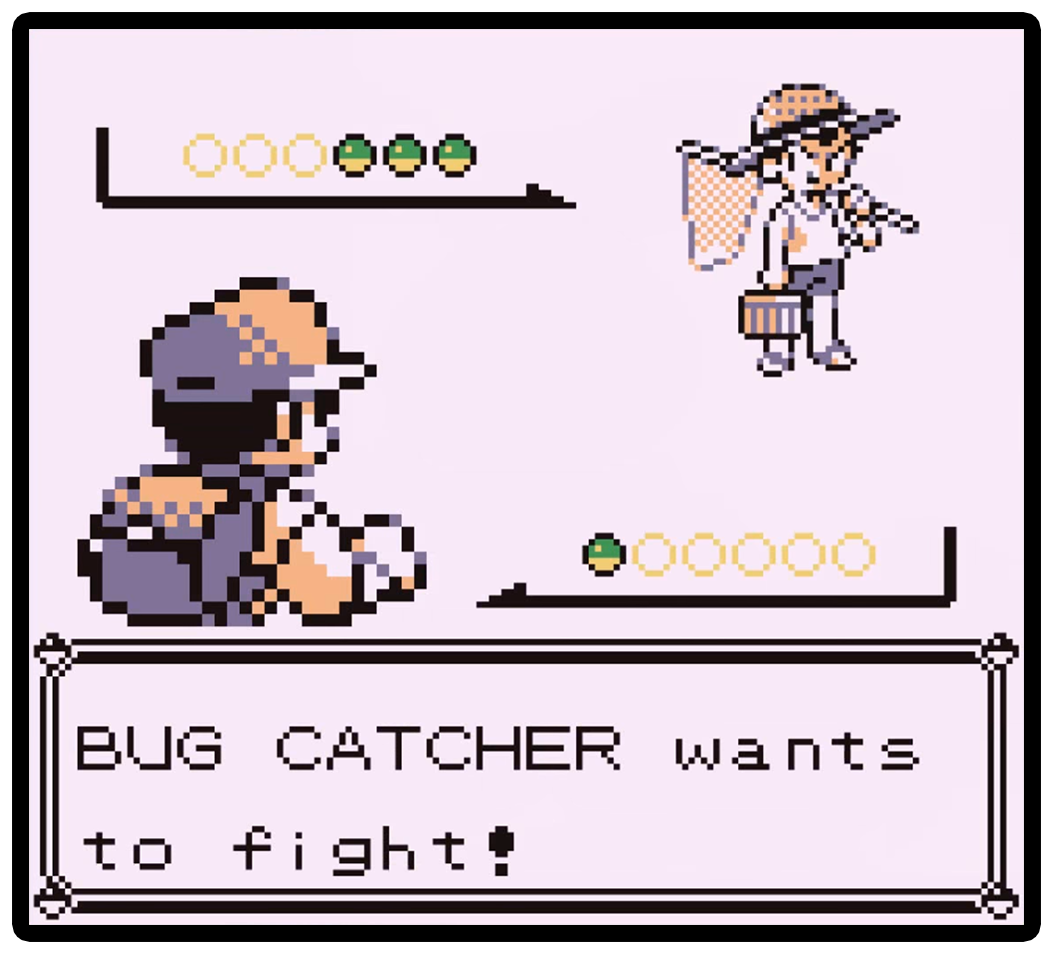
Yuuki: “Huh, you mean those bug catchers are…”
Tajiri: “That’s right, they’re based on how kids acted back in the old days.”
Yuuki: “Don’t you think it would be interesting if when you lost a Pokemon battle, your opponent took your Pokemon? Like with Menko cards.”
Tajiri: “Actually I made something like that as a prototype, but in the end, the frustration of having Pokemon you raised taken away from you was too great, so I scrapped that idea.”
Yuuki: “What about just having them lose EXP?”
Tajiri: “Earlier in development you could exchange Pokemon for money, but something felt wrong about exchanging money for living things, so I scrapped that idea too.”
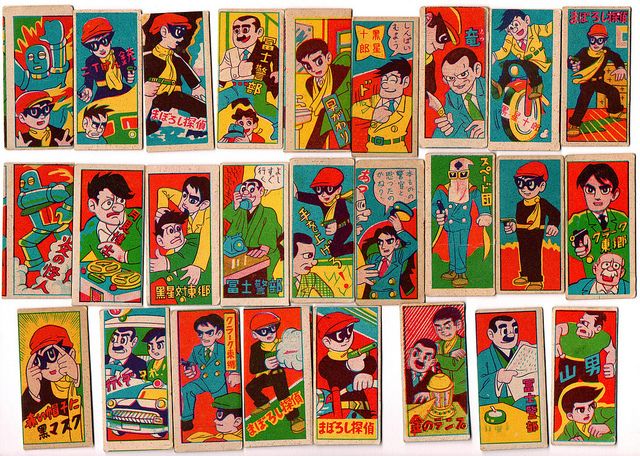
Dr Lava notes: Menko cards are sort of like the Japanese equivalent of Pogs. Basically, kids collect lots of different cards — often with anime or manga characters drawn on them — then play a game where they throw their cards down trying to flip over the other players’ cards. If you successfully flip it, you get to keep it, and the kid with the most cards at the end wins the game. So what Tajiri’s saying here is an early prototype of Pokemon worked similarly, where if you lost a battle, you lost your Pokemon. In another interview translated on this website, Ken Sugimori says Tajiri first explained the Pokemon concept to him by saying collecting Pokemon would be like collecting Menko cards back when they were kids. It would’ve been nice if Tajiri went into more detail about this prototype — did you lose all your Pokemon or just one? Hopefully I’ll find another interview to translate where we get a deeper explanation.
Next Tajiri says early in development, you could exchange Pokemon for money. He explains more in-depth in Red & Green’s 1996 strategy guide (pictured above). In that interview he says: “In Pokemon’s early development, you could buy Pokemon with money — but that resulted in the player focusing on saving money to buy them, and less motivation to struggle catching them in the wild… We also thought about making one player pay money in addition to their trade when there was an obvious difference in the value of two Pokemon being traded, but implementing Pokemon monetary values was beyond the limits of our programming. Transferring money in the game is very different from wiring money in real life, and there were difficulties getting it to work on Game Boy — there were just too many obstacles to overcome to make it happen. We had no choice but to focus on what we wanted most and give up on the rest. In this case, being able to trade Pokemon was our top priority, so we cut the monetary value feature.” That 8 page interview’s already been translated on this website, you can read the full translation here. Okay, now let’s get back to this Famimaga 64 interview.
Tajiri: “The Pokedex wasn’t an idea that came from collecting bugs, it was inspired by collecting things — it’s the result of trying to express the joy of collecting.”
Yuuki: “When you scroll through the Pokedex, you become very intrigued wondering what fits into all the blank spaces.”
Tajiri: “And because you’re intrigued, you want to fill in all the blanks, right? And I made it so the Pokedex entries expand the game’s reality. For example, this one is smart, or that one sings a song that puts you to sleep. Pokedex entries help people imagine the things we can’t express in-game, and it makes the world more fun. The Pokedex is a pretty cool invention, isn’t it?”
Yuuki: “Do people ever see you and say ‘hey it’s the Pokemon guy’?”
Tajiri: “Tons of people come up and talk to me, and yeah that happens a lot now. But when I was making Pokemon, I never thought it would turn into such a huge hit. At the time, I didn’t see anyone playing on Game Boy anymore, and it’d lost a lot of its popularity. I was at the barbershop once and someone asked ‘So you’re making a game? What kind of game?’ When I told them ‘It’s for the Game Boy,’ this guy I didn’t even know said ‘The Game Boy? You’re a bit late on that one.'”
Yuuki: “If that guy ever got his hands on Pokemon I’d love to try and mess with it. Make it so he can’t catch any Pokemon no matter what, or something.”
Tajiri: “At the time I was really fixating on different ideas, thinking about the buyer’s perspective. The shape of a forest, the Pokemon that appear — I wanted to make a game that would be different for everyone, but it was difficult. So I went to consult with Shigeru Miyamoto from Nintendo, and we ended up deciding to make it so depending on the color — whether Red or Green — the worlds would be parallel but different.”
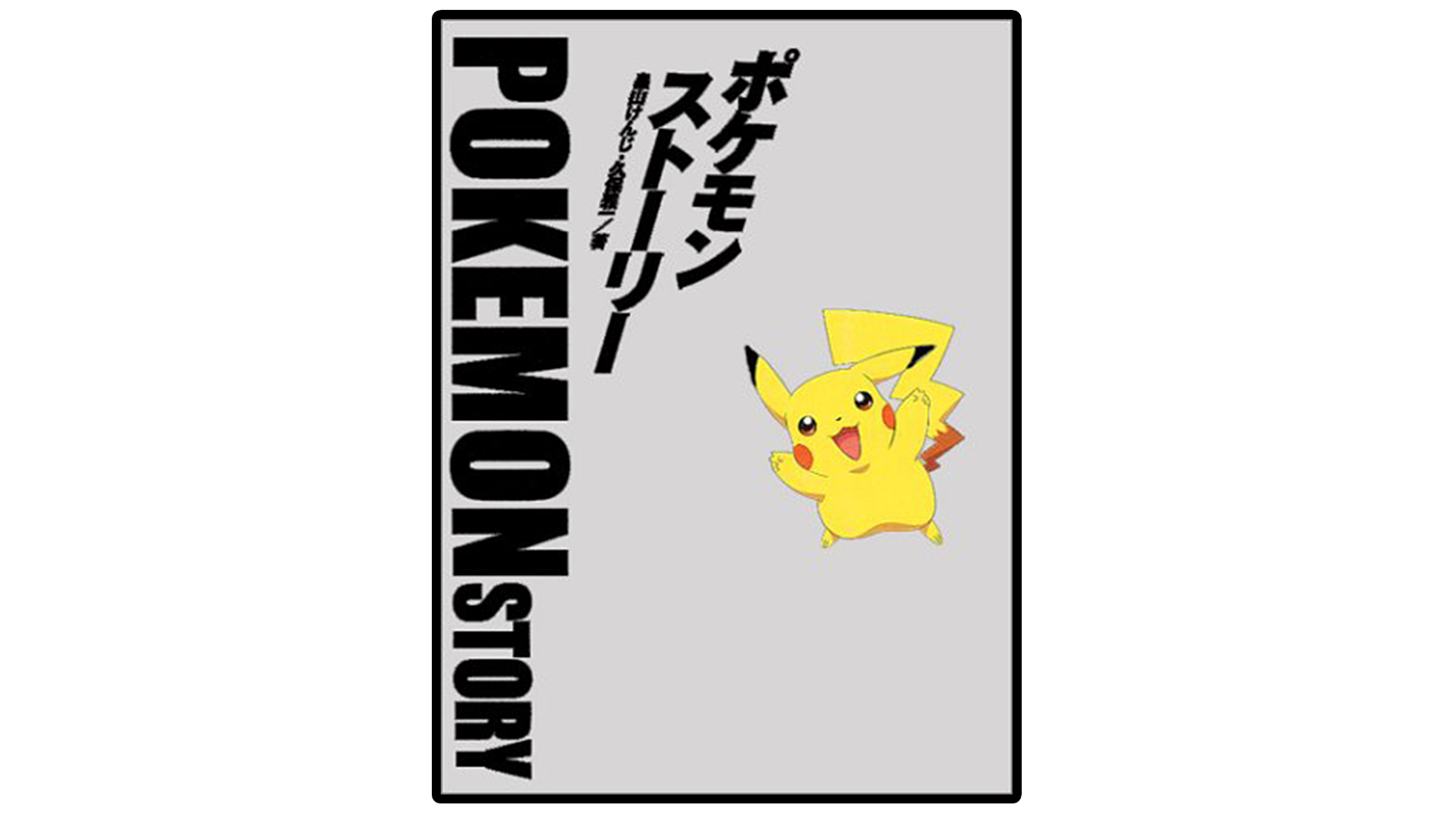
Dr Lava notes: When Tajiri mentions “the shape of the forest” being “different for everyone,” he’s alluding to his original idea for Gen 1. Basically, every copy was unique. In May 2000, Tajiri sat down for the biggest interview of his life, which was later published as 34 pages in the Japan-only book Pokemon Story (pictured above). I’ll post a full translation on this site soon, but for now, here’s the quote pertaining to Tajiri’s early idea: “So, we randomly assigned auto-generated ID numbers from 1 to 65,000 to every game cartridge. With the cartridge ID’s randomly determined, Pokemon caught in those games would all carry that ID number… So long as someone wasn’t trading with 65,000 different people, the odds of trading with someone with the same ID number were unlikely. With both partners having different numbers, their Pokemon would be entering different worlds when traded. Then, once the number is assigned, it would never change throughout the course of the game. I talked to Miyamoto about how we’d make players understand that every cartridge is different when they buy one, and he told me the system sounded interesting, but it was a bit difficult to grasp. He said if players can’t tell just by looking at it, then it won’t work out, and it would be better if the games’ color or appearance were different. I was shocked I was even allowed to do that. I told him it would really help me out if I could. So it was from trying to differentiate ID numbers that the idea to symbolically change the colors came about.”
The random ID system was ultimately scrapped, but it’s the reason the final game assigns the player a random ID number between 1 and 65,535. It’s hard to imagine the nine developer team at Game Freak hand-crafting 65,535 different versions of Kanto, so it sounds like their plan was to use randomly-generated landscapes. But apparently Tajiri was having a hard time figuring out how to execute his idea, so he was relieved when Miyamoto let him replace it with a much easier-to-implement color system.
Yuuki: “Why did you make a Pokemon called Porygon for the Game Boy?”
Tajiri: “I wanted to add something real into the world of Pokemon, and thought it’d be interesting if the game had an artificial Pokemon. I made that decision specifically because it’s on Game Boy. Everyone kept telling me ‘Tajiri, you need to start making polygon games for next generation consoles.’ But I was designing Pokemon for Game Boy, where it’s impossible to use polygonal 3D graphics. But people kept hounding me about it, so I thought it would be ironic to include a Pokemon called Porygon.”
Yuuki: “That certainly is ironic.”
Tajiri: “Adults notice the irony, but kids don’t get it — they just think ‘what a cute Pokemon’ and play with it. Once they become a little more familiar with computers they’ll realize ‘oh that was supposed to be irony.'”
Yuuki: “Once they grow a few years older they’ll realize that’s what the historical background was.”
Tajiri: “When I was a kid, sometimes I heard words and had no idea what they meant… When you only have a child’s vocabulary, and you hear a word like ‘protein’ in a commercial or something, and you don’t know what it means, but you think ‘maybe it’ll make me energetic?’ Pokemon has tons of words that kids won’t understand the meaning of until 10 or 20 years later.”
Yuuki: “Kadabra and Abra are like that too. Kids today definitely won’t know where those names come from.”
Tajiri: “I call these intellectually stimulating ‘timers.’ Games have the power to increase your knowledge and experiences just by playing them. They can also be used for education.”
• Tajiri’s Timer 1: Kadabra | Back in the day, magic was really popular, and the instigator of that trend was Uri Geller, so Pokemon distorted his name into the parody Yungerer (Kadabra). The popular “spoon bend” trick (Kinesis) became one of the Pokemon’s moves.
• Tajiri’s Timer 2: Protein | An ingredient added to drinks for muscle fatigue and nutrition. In Pokemon it’s a vitamin used to boost attack power. Try it out sometime.
Dr Lava notes: At this point I need to point out a few references only present in the Japanese versions of Pokemon. In English, these Pokemon are Abra, Kadabra, and Alakazam — derived from abracadabra and alakazam, two incantations commonly used in magic tricks. Kids who speak English will probably understand these references, but Japanese kids probably wouldn’t understand these three Pokemon’s Japanese names. In Japanese, Abra’s called Casey, named after the clairvoyant Edgar Cayce, who claimed he could channel his higher self during his sleep. In these sleep-talking sessions, he spoke about deep subjects like the afterlife, past lives, and predicting the future, and his wife and friends wrote down what he said. For this he was known as the Sleeping Prophet.
Kadabra’s Japanese name is Yungerer, a corruption of Uri Geller’s Japanese name. Geller claims to be a magician, illusionist, and physic capable of performing psychokinesis and telepathy. His most famous illusion of course is spoon bending. In English, Kadabra uses a move called Kinesis, but in Japanese it’s called Spoon Bend. In 2000, Geller sued Nintendo for £60 million, saying they’d used his name and likeness without permission. After that, the Pokemon Company stopped printing Kadabra TCG cards due to potential liabilities. But in 2020, Geller publicly apologized and said he’d allow for the production of more Kadabra cards. By the way, I emailed him at the time to see if he’d be willing to autograph 151 Kadabra cards to auction off for charity. He emailed me back to say he wasn’t interested.
Similarly, Alakazam’s Japanese name is a corruption of Harry Houdini, the famous illusionist and stunt performer best known for his death-defying escape acts, like being buried alive or plunged underwater in a straitjacket. Unlike the other two Pokemon, I don’t really see any connection between Alakazam and Houdini’s act — so it’s possible these three Pokemon designs aren’t directly based on their namesakes. Ken Sugimori’s said these Pokemon were inspired by the magic shows he’s seen on TV, so they’re likely just an amalgamation of various magician tropes, then their names were added later as homages. That’s just my personal theory though, so take it with a grain of salt.
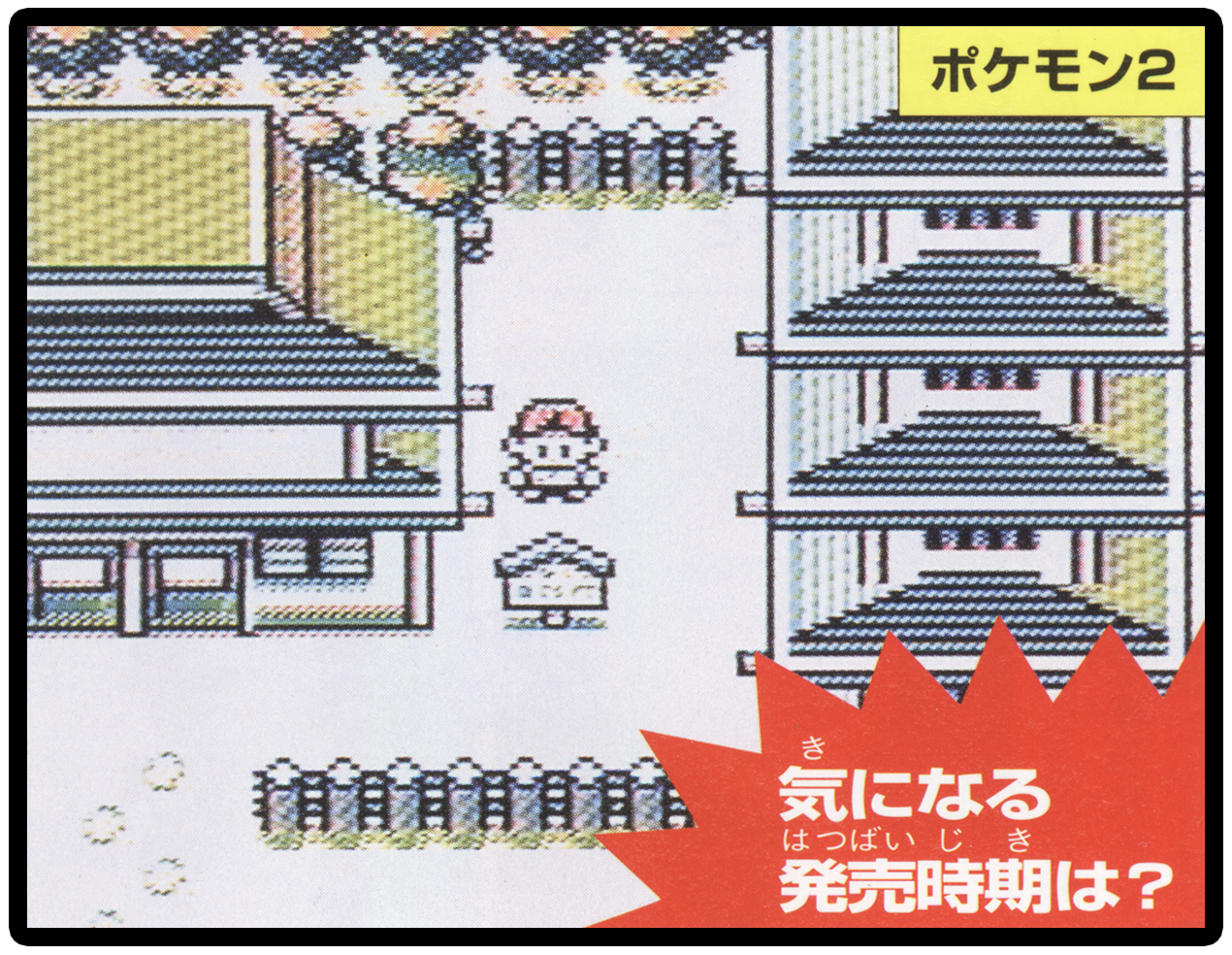
Yuuki: “Pokemon 2 didn’t release this past summer…?”
Tajiri: “No, unfortunately it didn’t.”
Yuuki: “I mean, summer vacation’s the longest break elementary school kids have, so wouldn’t you want to release it by then? Or maybe that’s what a normal person might expect, but game developers see it differently?”
Tajiri: “Hmm, well Pokemon took six years to make. Six years!! (He says emphatically). I thought I was done with Pokemon, then people told me ‘Tajiri, this is interesting, make another one.'”
Yuuki: “Who told you that?”
Tajiri: (He silently points at Yoshio Hongo of Nintendo PR, who’s been sitting behind him this whole time)… If I wanted to, I could’ve just made something half-assed and already released it, but I didn’t want to make that kind of game. I’m determined to make something interesting, and that takes a lot of time.”
Famimaga 64: “The creation of Pokemon 2 began with the squawk of a single crane?! Who’s behind it all? Mr H of Nintendo Public Relations. It appears the development of the highly-anticipated Pokemon 2 started due to the words of a single man. The same guy who appears in some Nintendo commercials! He’s the PR man in the back.”
Dr Lava notes: Back in the 90’s, Yoshio Hongo was sort of like the Japanese equivalent of Reggie Fils-Aime. By that I mean he played a key role at Nintendo — a legitimately important job — but sometimes appeared in the media as a parody of himself. Hongo’s perhaps best known as the guy who answered fan questions in Japanese magazine Nintendo Dream. He was one of Nintendo’s most visible mouthpieces back then, which is why this issue of Famimaga 64 expects readers to already know who he is.
It’s interesting to hear Tajiri say he thought he was “done with Pokemon” after Gen 1, until outside influences told him to produce a sequel. He sounds a bit like Al Pacino in Godfather 3. But I should stress that Tajiri didn’t actually say Hongo was the sole reason he decided to make Pokemon 2. This blurb about “the squawk of a single crane” is really just editorializing on the part of Famimaga 64’s staff. He undoubtedly played a role, but the full story is more complicated than “because Hongo said so.”
Yuuki: “Could it take another 6 years perhaps?… Oh dear.”
Tajiri: “I don’t think so. I’ll be alright. We’ve gotten quicker at development after making Pokemon once and getting used to things. We’ve already got most of the program formatting taken care of. But just like with 1, we’ve gotten lost and went through a lot of trial and error, trying to come up with Pokemon everyone will want, or how to make a new world, and how to make our ideas come to life. That’s why unfortunately, we can’t promise it’ll come out soon.”
Yuuki: “How many different Pokemon have you designed already?”
Tajiri: “We still do company-wide polls to see which Pokemon get used the most, and use the results to decide which ones we’ll use in the final build. We’ve made about 300 to choose from.”
Dr Lava notes: It’s worth noting that this interview took place about two months before Space World 1997, where the now-infamous Gold & Silver demos were exhibited. Along with lots of other Nintendo data, those 1997 demos were hacked from Nintendo servers in 2018 then leaked online shortly after. If you wanna see full-resolution rips of all 1004 demo sprites, the demo world map (based on the entirety of Japan turned on its side), and hear the story of the leak, click here.
Yuuki: “If I faxed you a Pokemon suggestion as a joke, would you use it?”
Tajiri: “Well, it’s possible.”
Yuuki: “Huh?! Seriously? Then I’ll have to send something really incredible.”
Tajiri: “Please think of something that’ll be as popular as Pikachu.”
Yuuki: “Has your development process changed at all for Pokemon 2?”
Tajiri: “It hasn’t really changed… We can’t just start hiring thousands of people because Pokemon was a big, profitable hit.”
Yuuki: “Because then Pokemon would become a contest of ideas?”
Tajiri: “Yeah, Pokemon’s a product of people with good ideas thinking about them for a long time, then making them.”
Yuuki: “And someone whose only hobby is video games can’t make a game right?”
Tajiri: “Rather than a kid who likes games making games, a kid who likes baseball making a baseball game — that turns out much better.”
Yuuki: “Will any ultra-rare Pokemon like Mew appear in Pokemon 2?”
Tajiri: “That’s a secret, but perhaps one will appear. One of the fun things about Pokemon is connecting with a link cable to trade, so I might just go into town with an ultra-rare Pokemon, trade it to someone, then watch it get passed around. But it will have to be incredibly low in number.”
Yuuki: “That could be kinda dangerous. Some old man chasing after kids with a link cable ranting about ‘I’m the guy who created Pokemon.'”
Tajiri: “We’ve only given away 1000 Mew at events, so for kids it really is incredibly rare.”
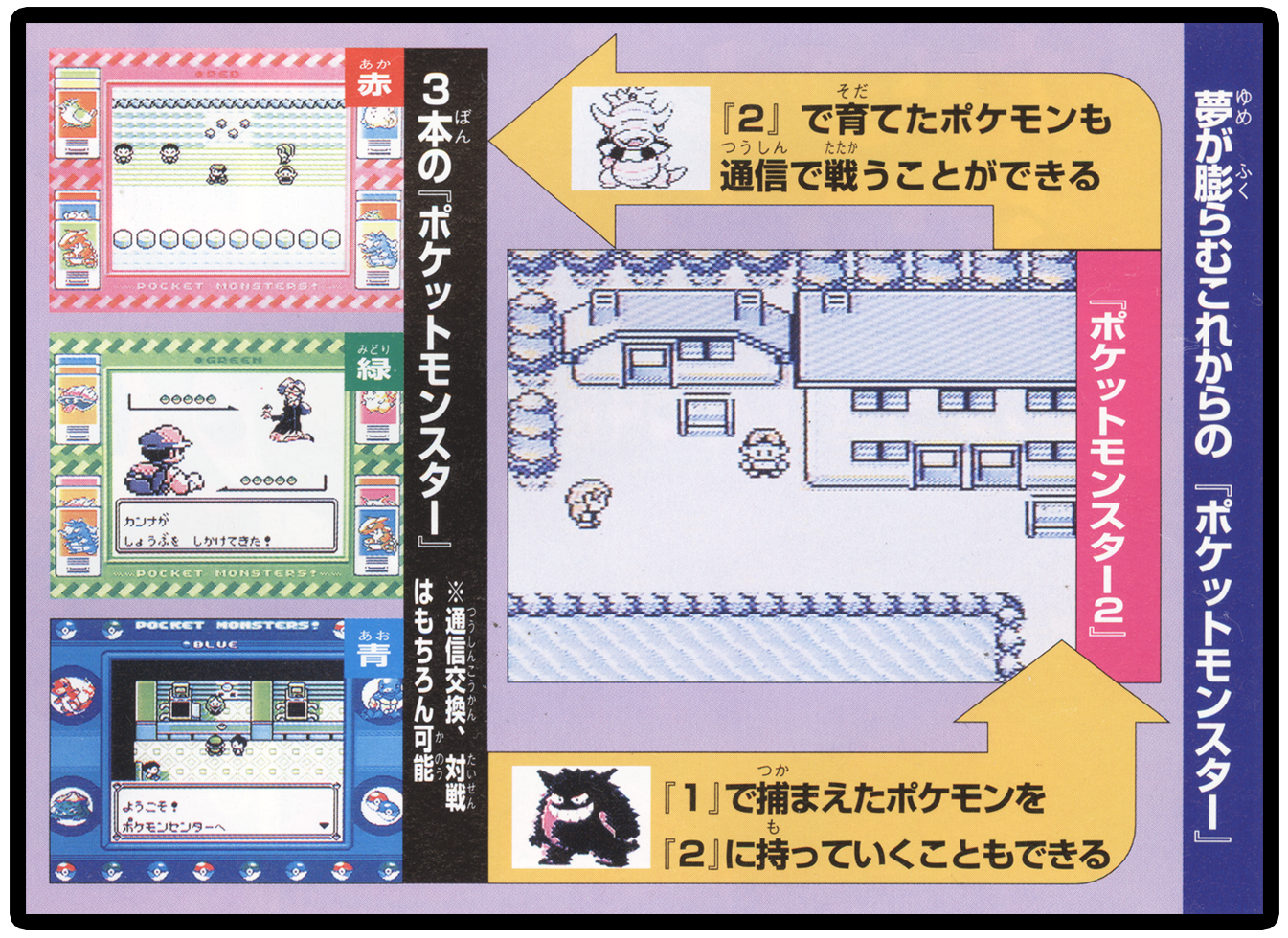
Yuuki: “I can’t wait to play it. The readers are all waiting excitedly for the release of Pokemon 2, do you have anything you’d like to say to them?”
Tajiri: “Even when 2 releases, maybe you shouldn’t just bury 1 in a desk somewhere or sell it to a store. It’s my goal to make the Pokemon series into a world where everyone links together. For example, when you’re playing 2, and you think you want a particular Pokemon — you could search for it in 2, but you’ll find it faster if you catch it in 1 and trade. I’ve thought of lots of ways to incentivize players to use Pokemon they already have to complete the Pokedex and progress through game. So I think it’s a good idea to play 1 a lot and collect as many Pokemon as you can in preparation. Once Pokemon 2’s finished, it’s gonna be bursting with fun and surprises, so please just try to hold on a little longer.”
Yuuki: “Maybe I’ll try to complete my own Pokedex.”
Kids’ Innocent Pokemon Questions
Question 1: “Why don’t Pokemon die?”
Tajiri: “When something you’ve raised dies, you feel incredibly sad right? Pokemon’s supposed to be fun and interesting, so I don’t want to make anyone sad. That’s why I decided not to have them die. When they lose to other trainers or wild Pokemon, they faint — but they absolutely don’t die. Since they’ve only fainted, you can take them to the Pokemon Center to heal them. There’s also Cubone, who was born from the thought of how sad it would be for a Pokemon to die. The bone Cubone holds is actually the bone of its dead mother. Cubone treasures it.”
Question 2: “Why did you make the game so Professor Oak offers you a choice of 3 different Pokemon?”
Tajiri: “There’s an important meaning behind the number 3. They form a 3-way deadlock where each one is weak against another, like in rock-paper-scissors. That’s why they have different types. Charmander’s a Fire-type, Bulbasaur’s a Grass-type, and Squirtle’s a Water-type. All 3 have a type they’re weak against, and also one they’re strong against. That way, no matter which one you choose, you won’t end up with a Pokemon who’s unfairly weak.”
Question 3: “Why can Pokemon only learn 4 moves?”
Tajiri: “Basically, it’s because of the Game Boy’s screen size. We could make it so Pokemon memorize 100 moves, but they couldn’t fit on the Game Boy screen all at once, so you’d have to scroll down. That’d be more difficult to understand and take a long time, so we decided on 4 moves so they all fit on-screen. People might think 4 is a low number, but even if you could make a Pokemon learn 100 moves, you’d still only use a few of them, and each individual move would become less important. When you learn a new move, you have to forget one — I wanted players to have to think about what move set they’re actually going to use, so that’s what I did. You just need to think strategically.”
Question 4: “Is the number of Pokemon types not going to increase in the future?”
Tajiri: “Hmm… Actually I’m thinking about adding more for Pokemon 2. But how many we’re gonna add and what they’ll be is still confidential. The idea for Pokemon types came from the idea that even an incredibly strong Pokemon should have a weakness. That’s why Pokemon that were incredibly strong in 1 might become less so in Pokemon 2.
Question 5: “When do Pokemon sleep?”
Tajiri: “Some sleep at night, others sleep during the afternoon, and some sleep all day. For example, Snorlax might seem weak because he sleeps most of the time, but he’s pretty powerful once he wakes up. Meowth moves quick in the anime, but in the lore he’s usually asleep all day. So to answer your question, it depends on the Pokemon.”
Closing Comments
And that wraps up this six page interview. The formatting of this magazine was pretty wacky, so I rearranged some text so it would transition smoothly to reading on a website. I also cut out some useless text, like the magazine telling us how Link Cables work — nothing you’ll miss, I promise. Once again, I’d like to thank Jacob Newcomb for translating and HiResPokemon for scanning, and all my Patreon supporters who fund these projects. If you wanna read more Pokemon developer translations you can find plenty on this website’s homepage, and there’s also quite a few only available on Patreon. Thanks for reading.

